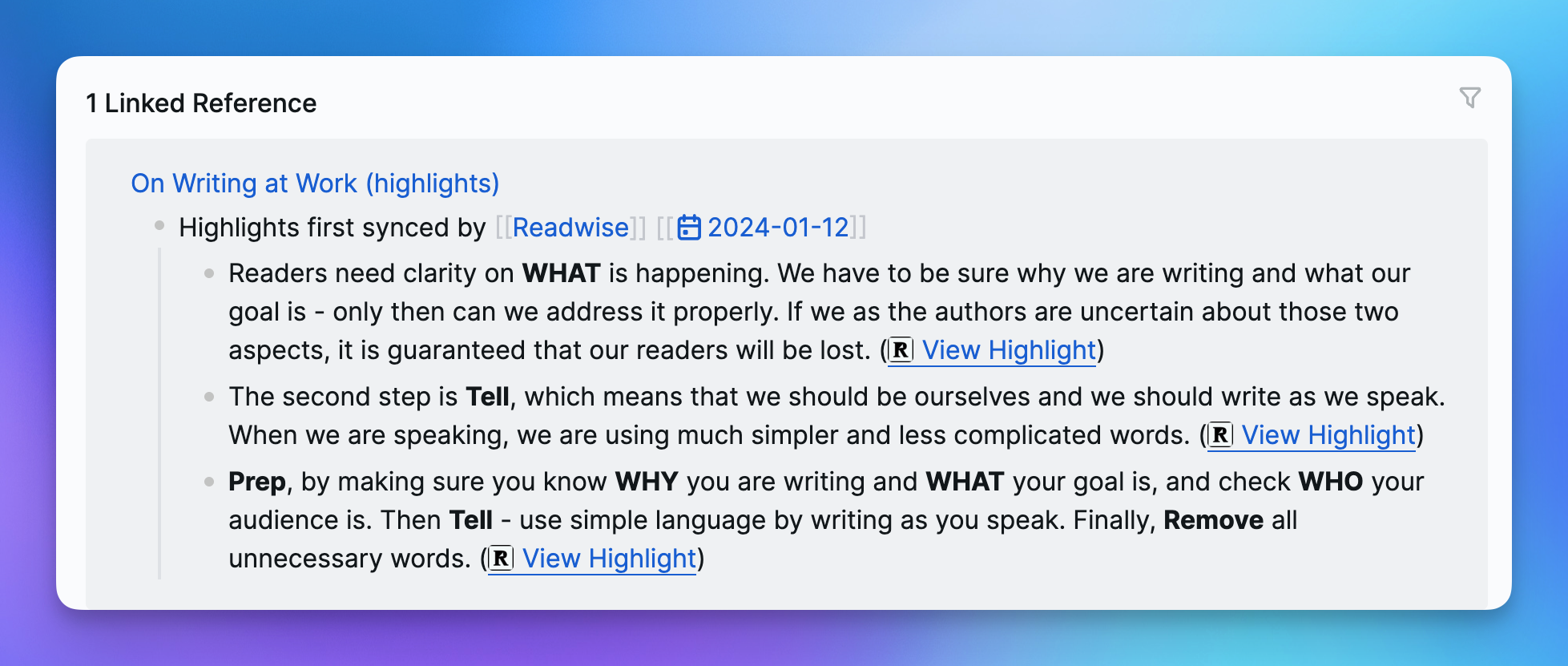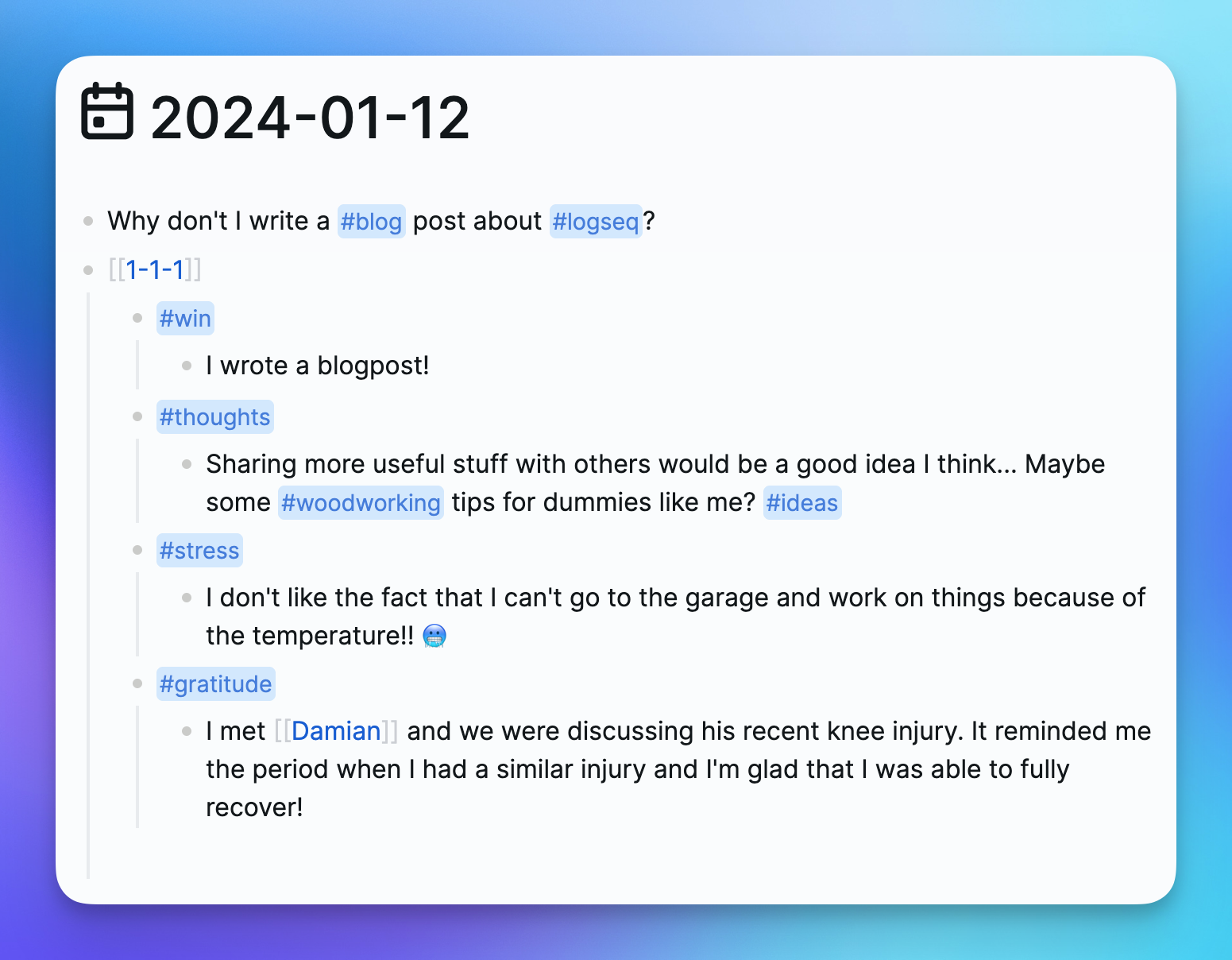How Logseq became my note-taking app

As someone who writes extensively, my journey through various note-taking apps was1 a quest for the perfect fit. At work, my routine involved documenting processes, writing meeting notes, drafting announcements, changes and building a repository of information. Outside of work, I write a personal journal along with comprehensive research on hobbies complete with images, links, and references. I also note down ideas, thoughts, and quotes that I come across in my daily life. I don’t shy away from storing information related to my personal life (e.g., health, finances, etc.) in my notes.
This post is inspired by Bobiko’s post 🇵🇱 Twórz uniwersalne notatki – I decided to finally write a bit about my adventure with Logseq.
I’ve tried many apps⌗
My toolkit was once a mishmash of popular apps—Apple Notes, Confluence, Evernote, Craft, Drafts, Google Docs, Bear, Ulysses, Obsidian2, and more. Despite the breadth of my experience with each, the search for the ideal platform continued. That was until Bartek introduced me to Logseq, praising its Markdown capabilities and suitability for our shared job responsibilities. His recommendation came at a time when I was already a devoted Craft user, drawn to its user-friendly UI/UX and seamless formatting experience. While Craft facilitated cross-linking between documents brilliantly, its closed system posed limitations for exporting content and integrating easily with outside world, nudging me towards alternatives. I then saw Michał grepping through his plain Markdown notes on his computer and thought that I need something simple. I also wanted to be able to grep through my notes, and I couldn’t do that with Craft. It was around March 2022 when I started using Logseq, I know this thanks to my own post:)
Mor than just a notepad⌗
Logseq stood out with its versatility—it wasn’t just about Markdown. The appeal of themes, templates, and plugins captured my attention, but the journaling view truly set it apart. Each day automatically begins with a fresh entry, ready to capture spontaneous thoughts. As the day unravels, links and tags organically connect these entries to relevant pages. Sometimes, a simple woodworking tip or a memorable point from a conversation can effortlessly become part of a vast network of interconnected knowledge. The ability to recall details just by navigating to a person’s or topic’s page is, for my workflow, invaluable.

However, Logseq isn’t without its hiccups. While it’s a robust system on Mac, its performance on mobile devices, particularly through iCloud synchronization, is not as good. It’s ok for reading but falls short for writing, leading me to keep Apple Notes and Drafts close at hand for certain tasks.
Journaling in Logseq⌗
Journaling presents a different set of requirements. Logseq, akin to a versatile hammer, handles a lot of tasks well, but for delving into personal introspections, Day One remains unmatched. For me, Day One has more intimacy, and Logseq is just a tool.
Still, experimenting with Logseq’s templating capabilities has been rewarding. My 1-1-13 template—covering #wins, #thoughts, #stress, and #gratitude -— has brought structure and reflection, aggregating tagged thoughts into a single, accessible domain. It’s another feature I’ve tried to replicate in Day One but without the same efficiency.


Looking forward⌗
I foresee sticking with Logseq for the long haul. Its plain Markdown foundation ensures flexibility and future-proofing, ready to transition content to apps like Obsidian or any newcomers that might arise. And if the need for customized exporting ever arises, I’m confident in my ability to develop a solution or rely on the community for support.
Pros⌗
On a positive note, Logseq has a lot going for it:
- built on plain Markdown
- easy to start with yet highly customizable for power users
- versatile
- fast
- extensible with plugins
- works great as a personal knowledge base (PKM)
- support for tasks
- templates
- free and open-source
Cons⌗
On the other hand, there are some drawbacks:
- mobile experience is not as good as on desktop
- I can’t use it for journaling, as it lacks the intimacy of Day One
- it’s not as polished as Craft
- it might be too complex for some users
In sum, Logseq has become an integral part of my life—a digital hub for my personal and professional worlds. Whether I’m journaling or managing a whirlwind of miscellaneous information, its strengths have, thus far, overshadowed its weaknesses, making it a mainstay in my day-to-day.
Summary of my Logseq adventure⌗
-
or rather always “is”. ↩︎
-
I haven’t played with Obsidian since 2021. I’m sure it’s a great tool, but when I tried it, it didn’t click with me, because it was just a markdown, I wasn’t ready for all the greatness of crosslinking back then. ↩︎
-
I know it’s triple “1” in the name, but I have now four sections…
1-1-1-1stands for 1 win, 1 thought, 1 stress, 1 gratitude. If you want to start something similar, get rid of one of the sections, likestressorthoughts. ↩︎